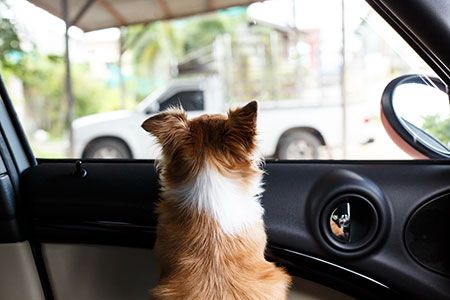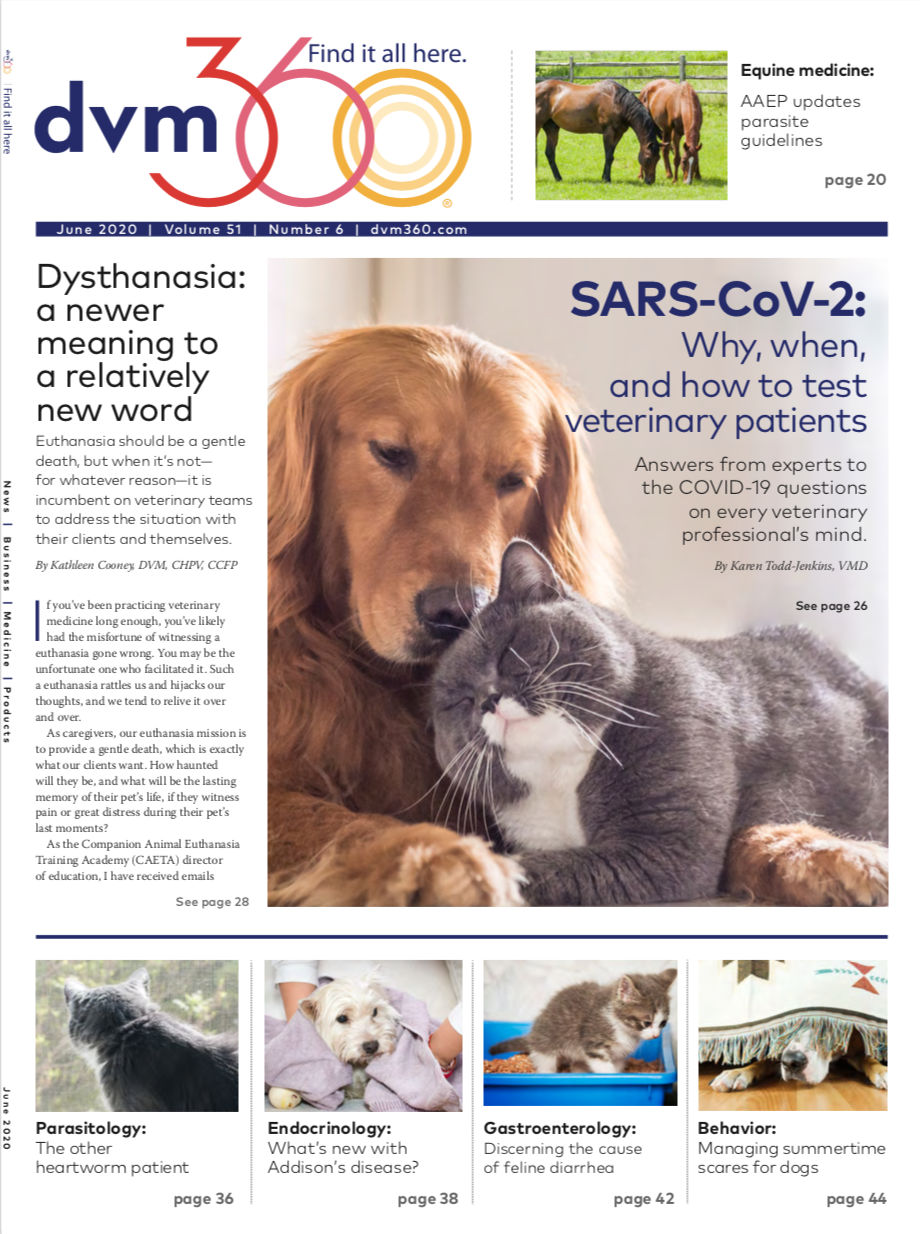Summertime scares for dogs: Travel, vet visits, fireworks and thunderstorms
Try these tips to manage situational fear, anxiety and stress in your canine veterinary patients.

Summer can be an uncomfortable, scary season for pets. But when that fear and discomfort go unchecked, it can turn into trauma. Use these recommendations to make sure pets at your practice are prepped to handle summertime scares with ease. (shutterstock.com)
The dogs you see in your veterinary practice may love splashing around in their very own kiddie pool when the temps rise, but the rest of summer can be not-so-fun. At a recent Fetch dvm360 conference, Barbara Sherman, MS, PhD, DVM, DACVB, DACAW, recently retired from North Carolina State University, shared some behavioral and pharmacological strategies she's found helpful to manage situational fear, anxiety and stress in dogs.
Travel anxiety
For dogs that freak out in the car, Dr. Sherman recommends giving trazodone one to two hours before departure or dexmedetomidine 45 minutes before departure (redose the dexmedetomidine every two hours, she says). Keep in mind that a dog that's salivating, panting or otherwise distressed in the car could be experiencing nausea-try maropitant to see if the dog's signs resolve.
Veterinary visits
“Fear Free and Low Stress will eventually become the standard of care in veterinary medicine,” Dr. Sherman declares. She recommends the same premedication approach with dexmedetomidine or trazodone as with travel anxiety and adds that giving the drug night before may enhance the effect the following day.
Once you've identified the patients in your practice that fear coming to the clinic, you can work with their owners on some environmental modification tactics. Have your clients:
- Travel with the dog regularly to fun locations so not every ride in the car ends at the veterinary hospital.
- Schedule their veterinary appointment for a time when the clinic is not busy.
- Bring “the good treats” to the clinic to drive positive associative learning (clients generally know what speaks loudest to their pet's heart).
- Keep hold of the dog's leash in the exam room. “A leash can be a wonderful Fear Free tool,” Dr. Sherman says. Many dogs feel more secure and comfortable when they're literally connected to their owner in this way.
Owners also need to train the dog to accept a basket muzzle if it's ever growled, hard-stared or snarled in the clinic, Dr. Sherman says.
Thunderstorms and fireworks
When the skies darken, many dog owners feel helpless as their pet starts to quiver, cower and plan its escape attempt-because surely the storm will dissipate on the other side of the fence.
Dr. Sherman offers one tip that might help clients: Many dogs like to be in the bathroom during storms-one possibility is that static electricity is a trigger of fear and its effects are blunted by bathroom furnishings.
The same drugs can be employed with storms and fireworks as with travel and vet-visit fear, but you have to use trazodone before fear, anxiety and stress become too advanced, Dr. Sherman says. However, you can still use dexmedetomidine at that point to help alleviate the dog's distress.
For any of these fearful situations, Dr. Sherman recommends that a dog receive a long-term drug such as fluoxetine if the scary event happens when owners are absent, if it happens frequently, or if the situational drug alone is insufficient or has side effects at high doses.
